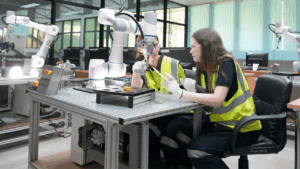Author: Greg Fullarton, FULCO Environmental
The Ontario Ministry of the Environment & Climate Change (MOECC) is proposing to define a ‘Qualified Person’ (QP) to be a person with a license or limited license under the Professional Engineers Act. Per the MOECC, “a person with a license or limited license under the Professional Engineers Act is accountable to the public through a tribunal process for discipline and enforcement that is prescribed in the Professional Engineers Act and Regulations. The ministry, the client or the public can use this process to make a complaint through the Professional Engineers of Ontario to address the concerns.”
What does this mean for Ontario Environmental Professionals?
Those who are not licensed with The Professional Engineers of Ontario (PEO) will not be able to sign off on Applications for Environmental Compliance Approvals (Air & Noise) prior to submission to the MOECC. The government would only recognize members of the PEO as qualified persons.
Background
On June 30, 2016 the Ontario Ministry of the Environment & Climate Change (MOECC) posted on the Environmental Bill of Rights (EBR) a “Technical Discussion Paper on Proposed Regulatory Changes and Environmental Activity and Sector Registry (EASR) Requirements: Plant and Production Processes with Air and Noise Emissions” for a 60-day review period ending August 29, 2016. The posting received many negative comments from the public concerning the definition of a “Qualified Person” as being a Licensed Engineer with PEO only.
It appears that most of the concerns regarding this proposal were ignored. The draft regulation for activities with air and noise emissions based on the aforementioned Technical Discussion Paper was posted to the EBR for a 30-day public review and comment period on September 26, 2016. Many companies/people disagreed with the proposal and suggested that the definition should be expanded to include other designations such as Environmental Professionals (EP) with ECO Canada. Very few of the suggested changes received any significant review or acceptance.
What this means for the Ontario environmental workforce
A lot of environmental science technician and technologist graduates and professionals working in this field are not eligible for PEO licensure since some of the college programs are only two years in duration. This could impact employment opportunities of these college grads as well as impact the volume of enrolment into these programs simply because the MOECC and PEO may not recognize these individuals as a “Qualified Person”. Even those professionals with years of experience preparing these applications will not be recognized until a membership with the PEO is acquired.
In addition, to be eligible for a license with PEO you will have had to work under an engineer for a minimum duration of 4 years. This requirement also proves challenging since most of the work completed by environmental consultants today are not currently licensed with PEO as the work being completed is not considered to be engineering. It is science and technology based.
Key points as to why the regulation should acknowledge other professional designations
Based on the above criteria it has been documented that ECO Canada has a certification process that governs its environmental professional (EP) members in a very similar way as the PEO organization. The main difference is that ECO Canada recognizes practical experience where PEO does not.
- The quantification of air and noise emissions from facilities and process related operations are predominantly prepared by environmental scientists, technicians, and technologists. They have specific educational training and practical experience in this area.
- Emission factors provided by the MOECC for the public to use to quantify emissions from various sources are typically provided by field data collected by technicians and technologists – not members of the PEO. Hence, there is no need for a P. Eng. to review and sign off on information already provided by fully qualified technicians and technologists.
- ECO Canada recognizes technicians and technologists, providing member certification which creates a visible and globally-recognized professional standard to serve the public interest. There is a disciplinary process in place which holds its members accountable and responsible for their actions.
While we value the professional engineer’s association we feel that ECO Canada members with specific designations and experience should meet the criteria of a Qualified Person (QP). Environmental Professionals (EPs), provide a valuable tool to the MOECC for their reviewers. For example, an EP with 5 years’ experience should be considered a QP under the regulation. In addition, minimum Errors and Omissions / General Liability Insurance will be required for a QP.
How to contribute or provide opinion
A group of Environmental Consultants (Ontario Qualified Persons Advisory Committee – QPAC) have joined together to present the issues associated with this decision to the MOECC and other government agencies. The objective is to have the QP definition broadened to be more inclusive of current and future professionals in this field and not limited to the PEO association.
Ensure your voice and opinion is heard by the MOECC. We welcome your feedback and encourage you to email us at info@fulcoenvironmental.com before December 30, 2016.
About Greg Fullarton, EP, (EP)CEA, RIHT, LTRP

Mr. Fullarton is the President of Fulco Environmental Inc. and is actively involved in the preparation, review and execution of technical projects with Fulco in the technical areas of Applications for Certificates of Approval, Environmental Compliance Approvals (Air, Noise, Waste), air and noise emissions assessments, dispersion modelling, occupational health and safety, waste audits, industrial hygiene and environmental auditing. He holds a diploma in Environmental Science from Sheridan College.
Greg Fullarton has successfully prepared more than 300 Applications for Certificates of Approval / Environmental Compliance Approvals for industrial, commercial, and institutional operations as required under the Ontario Environmental Protection Act. He has conducted:
- Dispersion modelling of atmospheric emissions using the MOE Regulation 346 Dispersion Models
- USEPA advanced dispersion models (ISC, ISC Prime, AERMOD, AERMOD Prime)
- USEPA advanced dispersion models (ISC, ISC Prime, AERMOD, AERMOD Prime)
- Evaluations of control technologies for atmospheric emissions
- Airborne Contaminant Emissions Reports in accordance with Ontario Regulation 127/01 and the National Pollutant Release Inventory





